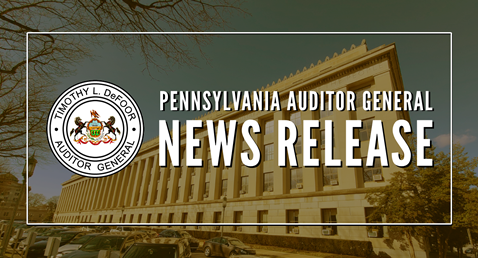Auditor General DePasquale Says Annual DHS Report Shows More Must Be Done to Protect At-Risk Children
Statistics show rising caseworker workloads, increasing impact of substance abuse on families
Auditor General DePasquale Says Annual DHS Report Shows More Must Be Done to Protect At-Risk Children
Statistics show rising caseworker workloads, increasing impact of substance abuse on families
HARRISBURG (May 31, 2018) – Auditor General Eugene DePasquale today said the latest statewide child-protection report shows that 40 children died and 88 nearly died from abuse and neglect in 2017 with 64 percent of those children already known to the child-welfare system.
“Forty children died from abuse or neglect in 2017,” DePasquale said. “Forty children. That’s six fewer child deaths than in 2016, but we are talking about children’s lives here. If even one child dies, it’s too many.”
DePasquale said the Department of Human Services’ 2017 Annual Child Protective Services Report posted online this week reinforces what he’s been saying about the state’s child-welfare system: It is broken and more needs to be done to protect at-risk children from abuse and neglect.
“What’s terrifying to me is that although more children were identified as victims and brought into the system in 2017, more children also nearly died,” DePasquale said. “If that’s not the definition of broken, I don’t know what is.
“More and more reports of abuse and neglect come in each year,” DePasquale continued, “but very few county children-and-youth agencies have seen an increase in the number of caseworkers assigned to assess and protect these children. Most counties haven’t had a full complement of caseworkers in years.”
The report shows not only a continuing increase in the number of abuse and neglect reports received, but also a spike in the percentage of parents struggling with substance abuse while the opioid crisis rages on and a potential meth epidemic is coming.
“So much more must be done to protect children. It is way past time that we as a commonwealth take child protection seriously and make it the priority it deserves to be,” DePasquale said. “That’s why I created my ‘State of the Child Action Plan,’ which lists 28 specific ways the governor, the General Assembly and other leaders can work together to help keep kids safer.”
Key facts
Other key statistics from the report include:
- Overall reports of abuse and neglect rose 8 percent from 2016-17. That’s a 15 percent increase in overall reports since 2015.
“Clearly, the workload for children-and-youth caseworkers is growing exponentially,” DePasquale said. “And that’s an increasing workload for a set of professionals already stressed out, overworked and underpaid.”
- There were 163,852 General Protective Service reports (those that do not directly allege abuse) in 2017, and about 50 percent of those were screened out. Of the reports determined to be valid, parental substance abuse was identified as a problem in 1 out of every 4 families (about 26 percent). That’s a 5 percent increase over 2016, when 1 out of every 5 families dealt with parental substance abuse (about 21 percent).
“It’s obvious the opioid crisis and potential coming meth epidemic are taking a toll on families,” DePasquale said.
- ChildLine handled 178,583 calls, an increase of 7 percent over 2016. About 3.5 percent of those calls went unanswered.
“These numbers represent a dramatic improvement over the 22 percent of unanswered calls that my team found in 2015, but that number still must be closer to zero,” DePasquale said. “Even one unanswered phone call means a child could be left in a life-threatening situation, and that’s unacceptable.”
In September 2017, DePasquale released his 80-page “State of the Child” special report, which detailed the strengths and challenges of Pennsylvania’s child-welfare system. A follow-up report, the 43-page “State of the Child Action Plan,” was released in May 2018.
# # #
EDITOR’S NOTE: The full 2017 Annual Child Protective Services Report, including regional breakdowns of data, is available at www.dhs.pa.gov.
Return to search results